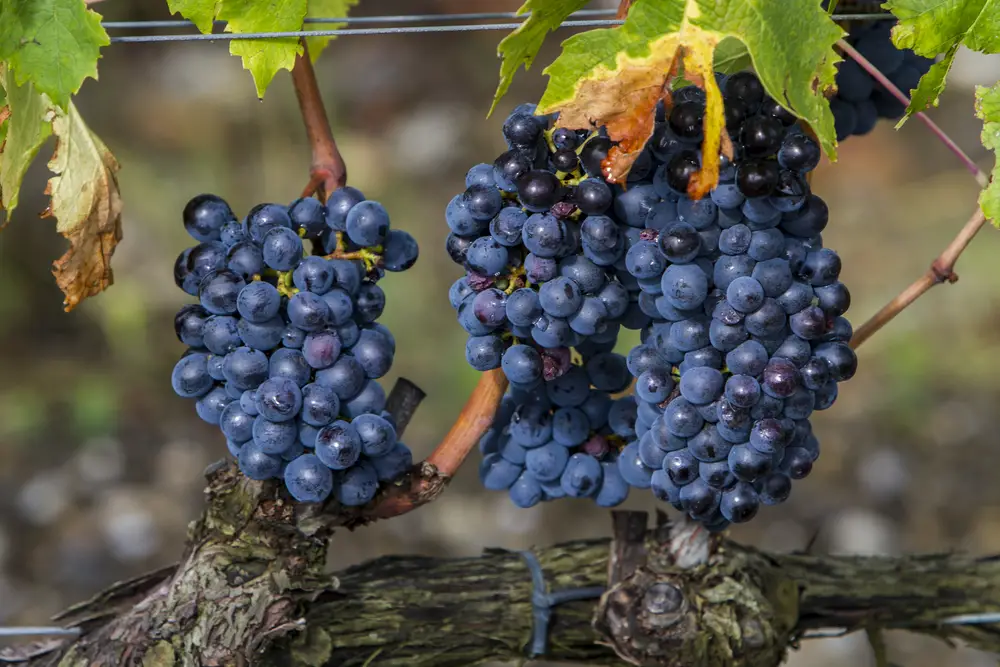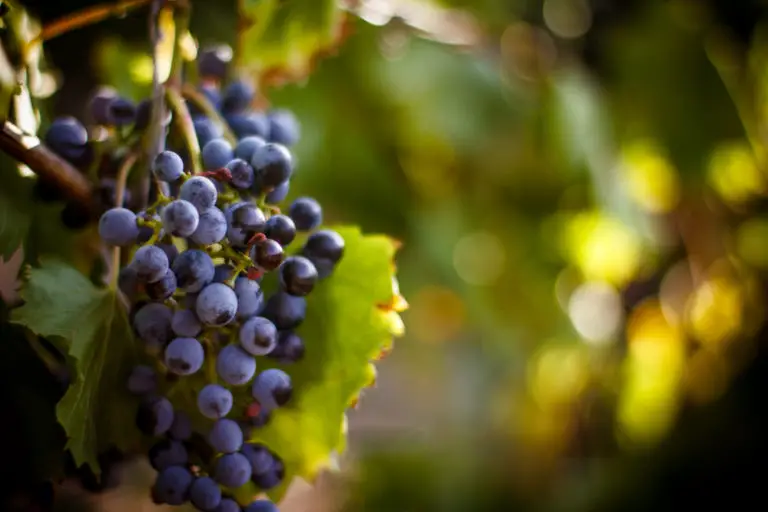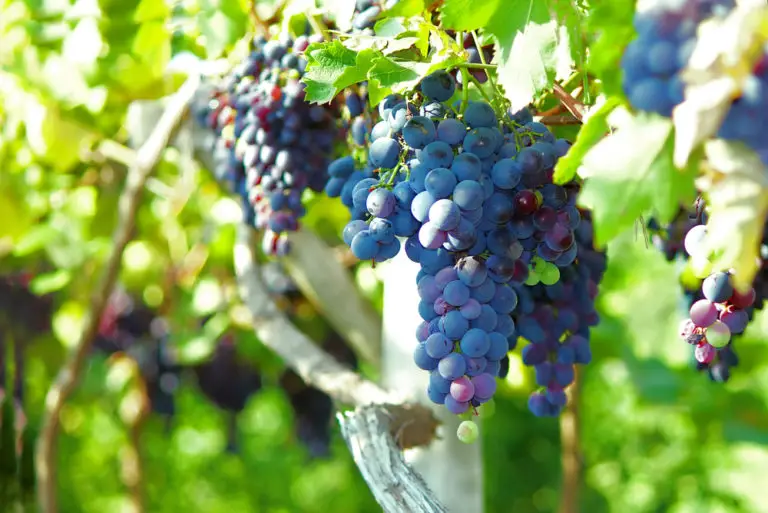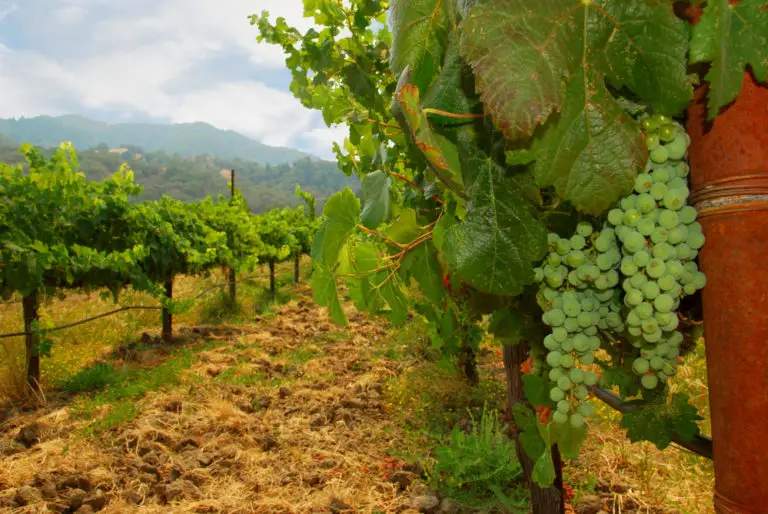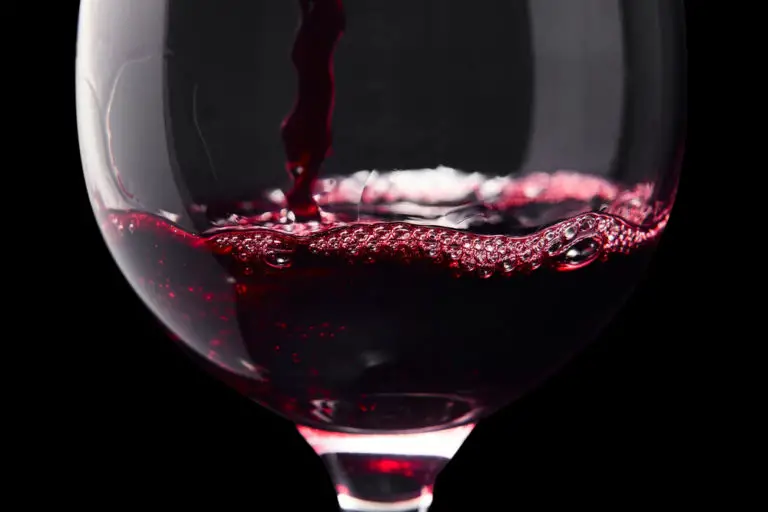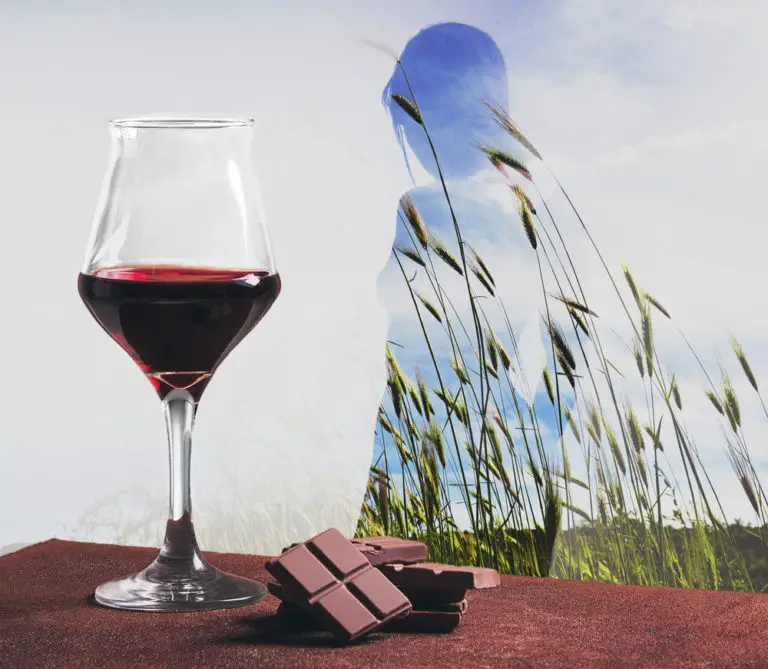Sangiovese: The Beginners Guide (2024)
The Sangiovese, also known as Brunello, is the most important grape variety in Italy. With 100,000 hectares of vines, it is also the most widely grown red grape variety in the country. The vine is also used in renowned wines such as Brunello di Montalcino, Vino Nobile, and Morellino di Scansano. A great wine for both connoisseurs and laypeople.
Wine Color: Light red to coppery red
Characteristics: High Acidity, light to medium body, tight tannins
Color of berry skin: Purple
Flavor: Dry
ABV: 11.5–13%
Origin: Italy
Notable Regions: Umbria, Campania, and Romagna in Italy; Mendoza, Argentina; Napa Valley, California; Sonoma County, Washington; Barossa Valley, Australia
Most Expensive Bottle: Case Basse di Gianfranco Soldera Brunello di Montalcino Riserva DOCG, Tuscany, Italy
Common synonyms: Brunello, Prugnolo, Morellino, Nielluccio, Sanvicetro and Sangioveto
- What is Sangiovese?
- Known Regions for Sangiovese
- Popular Blends of Sangiovese
- How to Enjoy Sangiovese?
- How is Sangiovese Made?
- History of Sangiovese
- Alternatives for Sangiovese
What is Sangiovese?
Sangiovese is an Italian grape variety that is grown particularly in Tuscany. Red wine serves as the basis for many cuvées and provides the compositions with fruit and a high acid and tannin content. Sangiovese pronunciation is san·juh·vay·zee.
The vine is ideally suited for blending. Some of the best Italian red wines are blends made from Sangiovese and Cabernet Sauvignon. Because of their high quality, the wines have been given the name “Super Tuscans”. These wines always mature in small, mostly new oak barrels.
The most famous cuvée is undoubtedly the Chianti. For the dark Sangiovese color, the very fruity wine is blended with a dash of Canaiolo. There is at least 70% Sangiovese in the elegant body, depending on the type of wine. It is solely enough to underline the significance of the Sangiovese wine. As a solo entertainer, Italian wine has a unique character that it promises with its brick-red body.
Sangiovese vs. Chianti vs. Cabernet Sauvignon
Sangiovese is a specific red grape variety, while Chianti is a kind of Italian wine. Every Chianti has a fixed Sangiovese alcohol percentage along with cabernet, merlot, or syrah. This blend provides the wine with a fine finish, silkier texture, and more fruitiness than 100% Sangiovese abv.
In other words, Sangiovese is the heart and soul of Chianti. It has a liquid that giddies the head and hits the taste buds. The name ‘Chianti’ stirs the imagination, when the two are put together it makes a mighty force.
Sangiovese and Cabernet Sauvignon are the two well-known red wines. Cabernet Sauvignon is the most widely consumed red wine throughout the world, while Sangiovese is the main attraction of Italy. They both have similar levels of alcohol content and tannins. But, they differ in food pairing, flavor, and history in many ways that help them differentiate the two wines.
Sangiovese Characteristics
The vines of the Sangiovese are long-lived, strong, and prefer dry terroir, rich in clay and lime. On the other hand, they cannot tolerate water stagnation and cold weather. Because of this, Sangiovese cannot be grown in northern areas, while warm regions by the sea are ideal. Therefore the Tuscan Maremma is the perfect cultivation area of the Sangiovese.
Depending on the age, Sangiovese red wines have a strong ruby red to brick red color in the glass. Young wines are still quite bitter on the palate. That changes with maturity – the older the drop, the more complex is the balance of structure and aromas.
It is an elegant, full-bodied wine having fruity hints of cherry, plum, and smoky earthy notes. Sometimes the fine drops exude a subtle smell of Mediterranean herbs, violets, or truffles. During the barrel aging, fine notes of vanilla, leather, and dark chocolate are added.
Hardly any wine connoisseur will want to do without a glass of good Chianti – and thus also not Sangiovese. The Italian is the perfect complement to Italian summer cuisine and pasta and tastes wonderful with grilled food.
Sangiovese Taste Profile
The Sangiovese can produce wonderfully strong wines with a light plum note. In general, the variety is characterized by a high acid and tannin content and a bright red. Wines made with Sangiovese grapes inspire a fruity taste of blackberries, blueberries, currants, and cranberries.
Sangiovese flavor profile Is also influenced by spicy aromas such as leather, tobacco, cloves, or licorice. The scent of young Sangiovese wines is often reminiscent of violets. Since the variety tends to mutate, other variants can be found. Some approved offshoots of the grape variety, such as Sangiovese Grosso, have a sour cherry taste and a hint of chocolate and vanilla.
Depending on the type of aging, it is possible to weaken at least a certain proportion of the high tannin content so that ultimately smooth and soft wines can also be created. With age, however, the wines gain depth, elegance, while losing a large part of their tannin content.
Sangiovese Ageability
In contrast to a few decades ago, the Sangiovese grapes come from relatively young vines (around five to ten years old), even for high-quality wines.
Older vines are better suited to produce a wine with a long shelf life. In addition, long storage is usually not planned at all: Today, most wines are mainly matured, in such a way, that they are optimally ready to drink on the shelf.
Nevertheless, wine can benefit from longer storage because the maturation process continues in the bottle depending on many factors. The more natural preservatives such as acidity, tannins: As a general rule (tannins), alcohol and sugar a wine have, the longer it is durable.
The grape variety and even the bottle size are also of some importance. There are grape varieties with a long shelf life, which gain aroma through storage and only reach their full maturity and complexity after a few years. Sangiovese’s profile requires a minimum of between 2 to 5 years of aging before release.
Notable Regions for Sangiovese
The Chianti, in particular, is now considered a model wine for Tuscany. But thanks to many Italian immigrants, the vine is now represented worldwide. In Europe, the Sangiovese regions are Greece, Malta, Switzerland, and Corsica, which can offer the grape the ideal hot climate. Outside of Europe, there are significant growth areas in Israel, the USA, Brazil, Chile, South Africa, and even Thailand.
Australia
Both Western and Southern Australia are known to grow Sangiovese successfully. At the same time, most of the products found in the bars and supermarkets of this region are products of the Pizzini vineyard. The Sangiovese vineyard is located in the Victorian Highlands and situated at Coriole Vineyards in McLaren Vale.
Montalcino
Located in the south of Siena, Montalcino is known to grow big-size, high-quality, and oak-aged Sangiovese wines. The vineyards in the hills of this region produce the best quality Sangiovese grape. The soil here has higher clay nutrients and clay contempt when compared to the neighboring areas.
Chianti
Chianti makes up about one-third of Tuscany. It is mostly located in the north of Tuscany, and, therefore, the grapes here have higher acidity and are relatively smaller. Chianti produces wine made from a minimum of 70 percent Sangiovese. The remaining is made of different earth-based ingredients, fruits, etc.
Italy
Sangiovese is one of the most dominant varieties of grapes in Italy. It is grown across many vineyards in Italy. More than 10 percent of Italian vineyards grow Sangiovese. Many wine appellations originate from Italy. The grape is specially celebrated in Tuscany, but it’s also grown in other Italian regions.
United States
Vineyards in California and Washington can successfully produce Sangiovese in the United States. Although these grapes do not have massive popularity in America unlike the Merlot or Cabernet Sauvignon, it still flourishes in certain climates. Other notable regions where Sangiovese grows are the Hill Country of Central Texas which has a similar climate to Sangiovese Tuscany.
Popular Blends of Sangiovese
Sangiovese is an excellent varietal to be used as a blend or in a Cuvee. The expansion takes place both single-variety and blended with other grape varieties. Internationally widespread vines such as Cabernet Sauvignon or Merlot are particularly often used for the cuvée. Here are some of the famous Sangiovese blends:
Montefalco Rosso DOC 2016 – Tenuta Montefalco
This Sangiovese blend is of bright ruby red color in the glass with purple nuances. It has an intense aroma with a complex bouquet. It has fresh notes of red fruits, ripe cherries, red berries, and ripe plums, spicy aromas with hints of quinine, sweet spices, cinnamon, and a harmonious wood tone in the background.
Brunello di Montalcino
The Brunello di Montalcino or Brunello for short is one of the most famous wines in the world. Along with Barolo and Barbaresco, it forms the so-called three big B’s of Italian quality wines. It has a ruby red color, which takes on a pomegranate red color as it ages.
Rosso di Montepulciano
The Rosso di Montepulciano by Carpineto has a shiny ruby red color and seduces the nose with ripe aromas of red fruits, with strawberries and cherries coming to mind. Some violets, Spicy, balsamic notes, a hint of oak, and other intense flowers complement this.
Vino Nobile di Montepulciano
Vino Nobile di Montepulciano is one of the three great Sangiovese wines of the region and, together with the Brunello di Montalcino, was the first wine in the region to receive the DOGC classification in 1980. The taste of the Vino Nobile di Montepulciano is very red-fruity, elegant, and extremely full-bodied.
Tempo Riserva Morellino di Scansano
Ruby red with dark reflections, the Tempo Riserva Morellino di Scansano DOCG red wine from Tuscany beguiles the eye and arouses enjoyment curiosity. Its aroma is expressive and rich in finesse with various nuances. The fruity notes of berries and plums are joined by overtones of bushes. A flowery undertone also characterizes the bouquet.
How to Enjoy Sangiovese?
All wines come with recommendations that make them taste best and take out the Sangiovese flavor. Pairing them with the right food at the optimal temperature and correct stemware are some things that can enhance your wine experience. Here are the ways to enjoy a glass of Sangiovese.
Food Pairings
As a native Italian, Sangiovese goes particularly well with Italian cuisine. In general, the diverse red is an excellent addition to the Mediterranean and sometimes even oriental dishes.
Sangiovese tastes particularly exquisite with pizza and pasta. A huge advantage: There are hardly any limits to the variety of sauces. Whether mild cream sauces, spicy pesto, or hearty tomato-based sauces – the versatile red wonder wine is an excellent match in any case. Here is some famous Sangiovese wine pairing:
With a young Sangiovese, light dishes are specially paired with:
- Meat: duck, poultry, ham, game
- Fish: salmon
- Cheese: Brie, Camembert, Emmentaler, Gouda, Maasdammer, Tilsiter and similar
- Vegetables: leafy greens, beans, broccoli, peas, cucumber, corn, carrots, peppers, mushrooms, tomatoes
- Dessert: crème brulêe, ice cream, sorbet
If the wine is a little more mature, it also goes well with heavier dishes:
- Hearty: casseroles, soups
- Meat: grilled meat, minced meat, veal, lamb, beef, wild boar
- Fish: Flavoured seafood, mussels, and prawns
- Cheeses: Esrom, Geramont, Gorgonzola, Havarti, President and the like
- Vegetables: broccoli, mushrooms, olives, tomatoes
- Dessert: red fruit desserts, dark chocolate, black chocolate
Temperature
For the aromas to develop in red wine, higher temperatures are necessary. Red wines, in particular, which contain many tannins (so-called tannins ) (such as Cabernet Sauvignon), are inedible when cold. They then develop a bitter taste.
You should not serve red wines too warm either, because then the Sangiovese alcohol will predominate and the taste will dominate. The red wine looks overloaded at these temperatures and loses its elegance.
The old rule of thumb used to apply that red wine would develop its aromas perfectly at room temperature. It is no longer true because modern houses and apartments are on average a few degrees warmer than the apartments in the past.
Therefore, the new rule of thumb is- red wine should always be a few degrees cooler than room temperature.
Depending on the ambient temperature, it is also advisable to pour less and keep the bottle cool, otherwise, the wine will heat up too quickly and too much. As for temperature, 60-65 degrees Fahrenheit is the optimal temperature for Sangiovese.
Stemware
It is entirely sufficient if you have three different types of red wine glasses in the cupboard. You should have a small one with a light body, a taller one with a little more body, and a medium one with a lot of body. Here are perfect stemwares to drink Sangiovese:
Standard glass for red wine
A standard red wine glass is perfect for wines with a low tannin content. Its narrower shape prevents it from evaporating too quickly. The elongated goblet has a slightly larger opening than a white wine glass and a slightly bulbous shape. It is the perfect glass to serve different types of Sangiovese.
Glass for Bordeaux wines
For wines with a higher tannin content, a larger, more bulbous glass is required. The air supply must be higher for the bouquet to develop optimally. Since there is a lot of space in the glass, the character of the wine can optimally unfold through swiveling and better ventilation.
Glass for Burgundy wines
Glasses for Burgundy wines are slightly more bulbous and almost resemble a balloon. These powerful wines also want to breathe to be able to develop optimally.
How is Sangiovese Made?
The Sangiovese wine color agents are mainly found in the skins of the grapes. Therefore, in contrast to white wine, the mash and not the grape must be fermented for the production of red wine. The resulting alcohol dissolves the coloring substances from the fruit peels of the red grapes. After fermentation, the wine is pressed.
Mashing
After the grape harvest and selection of the grapes, mashing is the first step.
The term stands for the breaking and tearing of the grape skins, the release of the grape juice, and the mashing of the liquid and solid grape components. In this process, the mash is cooled down in a targeted manner to delay the start of fermentation. The result of the slowdown is the extraction of clearly sensitive fruit flavors. Here is the Sangiovese winemaking process:
Fermentation
Omnipresent yeasts automatically start the fermentation process. This arbitrariness is rejected by ambitious winemakers, therefore, they add pure yeasts to the must. Pure yeasts should ensure reliable fermentation processes.
In any case, the mash remains for weeks, and the ongoing fermentation process captures both the liquid and the solid components, at the same time. The process heat generated in this way is dissipated in a controlled manner by cooling the fermentation tanks.
Pressing
This separation of the mash into solid and liquid phases is mostly realized in horizontal, hydraulically operated stainless steel basket presses. First of all, most of the wine that flows off without pressing is called pre-run wine. Compared to pressed wine, it has only a quarter of the tannins. The winemaker will later decide to what extent to add the pressed wine again during the expansion phase.
Expansion
Now the fermented wine is matured in barrels or fermentation tanks: Strong red wines mature in barrique barrels for 6 to 18 months – here, they take on certain aromas, whereby the age of the barrique barrels plays a decisive role. The best results are achieved by aging in aged barrels or a corresponding blend of the contents of old and new barrels.
Maturation
Red wines can be stored in the cellar – most of them for up to four years, some for 10 to 20 years, and some for up to 200 years. In addition to the careful work in the vine and the cellar, the composition of the grape varieties used is decisive for this shelf life. The wine is then bottled and you can then enjoy drinking Sangiovese.
History of Sangiovese
The origin of the Sangiovese wine is still not known. A lot of tiny rural regions claim to know the origin. So far, there is no proof in this support. However, assumptions suggest that the Etruscans already cultivated the Sangiovese. So one assumes it as a native grape variety from Italy.
For a long time, a distinction was also made between the Sangiovese name: Piccolo and Grosso, as the grapes appeared large and small in different locations. When vintners then planted the small-stature grapes on sites with large-stature grapes, one quickly realized that it was the same grape variety. The small grapes grew tall.
However, this top wine has only been around since 1961, and since the 1970s, it has increasingly established itself as one of the best red wines in Italy. The core areas are Tuscany and partly also Emilia-Romagna and Marche. The Sangiovese enjoys cult status here.
Alternatives for Sangiovese
If you are a fan of Italian Sangiovese wine and would like to try something different. Then, you must try the following alternatives to the Sangiovese varietal. People recommend these wines as they have some similar Sangiovese characteristics that make them lovable. Let us look at these alternates:
Zweigelt
The red wine Zweigelt is considered to be the most widespread red wine variety in Austria. It has a beautifully pronounced, violet-red color and shows its typical fruitiness in the form of its great cherry notes, which are harmoniously accompanied by vanilla tones. In addition, it has a charming, soft body with significantly reduced tannins.
Tempranillo
Tempranillo – Spain’s number one – is deep red, strong, and elegant national pride in red wine form. The most important red wine variety is grown, vinified, and then called differently depending on the region in almost all of Spain and Portugal. That makes Tempranillo wine not only very tasty but also quite complicated to find.
Syrah/Shiraz
Wines made from the Syrah and Shiraz grapes variety amaze with fruity spiciness, a lot of body, and a double style: in a cool climate, coolness dominates, in hot areas it jumps towards you with opulent fruit. The French Syrah style describes elegant, spicy wines with soft tannins, while the Shiraz style, which originated in Australia, produces softer, fuller, and milder wines than in France.
FAQ
What is Sangiovese wine?
Sangiovese descriptors describe this wine as a dry, tannic wine with a typical bouquet of sour cherries, and an intense ruby red color in the finish.
Where is Sangiovese grown?
Sangiovese wine ingredients are the most widely grown grape variety in Italy, with a focus on Tuscany. But it can also be found in other regions like Emilia-Romagna, and Umbria.
What does Sangiovese wine taste like?
Sangiovese alcohol content has a fruity taste of blackberries, blueberries, currants, and cranberries, along with spicy aromas such as leather, tobacco, cloves, or licorice.
How should Sangiovese be served?
Sangiovese should be ideally served at 60-65 F. It should be paired with Meat, Fish (salmon), Cheese, Vegetables (leafy greens, beans, broccoli, etc), and Dessert.
Are Chianti and Sangiovese the same?
Chinati is a blend made using Sangiovese along with other varietals like cabernet, merlot, or syrah To provide it with a fine finish, silkier texture, and more fruitiness.
Is Sangiovese wine sweet or dry?
Sangiovese is a dry, light to medium-bodied red wine that falls mostly towards higher levels of mouth-watering acidity and tighter tannins.

